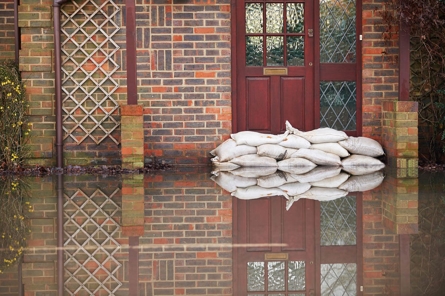
Business owners face a wide array of challenges on a regular basis. Besides the basic tasks of serving customers, keeping up with bookkeeping and managing inventory, unexpected risks such as a natural disaster can arise without a moment's notice, putting businesses at risk of closing their doors permanently. According to the Federal Emergency Management Agency (FEMA), about 40-60 percent of small businesses never reopen their doors following a disaster. Having a detailed business Disaster Restoration plan in place can make the difference in a business's ability to pull through.
Companies who have excellent risk management plans include Lowe’s, The Home Depot, Walmart and Waffle House. In fact, FEMA uses what it informally refers to as “the Waffle House Index” as a scale to assess a disaster's severity in individual communities. Learn more about what constitutes “the Waffle House Index”, plus tips on how you can develop your own business Disaster Restoration plan, with help from FEMA and ServiceMaster Restore®.
The reasoning behind the name
Just what do Waffle House restaurants have to do with a community Disaster Restoration plan? The popular restaurant has a commitment to staying open, no matter the circumstances. That's why major businesses like theirs have extensively detailed and sound Disaster Restoration plans. If a disaster were to strike, these major businesses do everything they can to keep their doors open and help the neighborhoods they serve.
Waffle House Index levels
Businesses that have complete risk management plans, like Waffle House, typically provide support and basic supplies to their communities throughout the disaster. The Waffle House Index reflects the extent of the company's operations and service, as well as hints at just how badly the nearby community has been affected. According to FEMA, the Waffle House Index consists of the following three levels, which FEMA uses as an indicator of the severity of a disaster:
- Green: The restaurant is open and offering a complete menu. If the index is green, it could mean that the community was not as devastated by the disaster, or that the company was simply well prepared to handle the unexpected.
- Yellow: The restaurant is open but service is limited. When the index is yellow, it could mean that power may be limited or food stocks are running low and are unable to be restocked.
- Red**:** The restaurant is completely closed. If the index is red, FEMA will know that the community has been brutally impacted. Emergency services in surrounding areas, and even throughout the U.S., may be mobilized to help the area respond to and recover from the worst.
How to create a business Disaster Restoration plan
You may not be able to predict when a hurricane, earthquake, tornado, or another natural disaster will strike. Luckily, there are guidelines and resources available to help keep your business protected if the unexpected happens. Use disaster preparedness resources and toolkits from Ready.gov to help you plan for, respond to and recover from a disaster. Some things that must be included in a business's Disaster Restoration plan include:
- Identifying your area's risk for specific natural disasters.
- Developing a detailed preparedness plan that is easily accessible to employees.
- Considering how your business can continue running in the event of a disaster, considering technology, staffing and vital business assets.
- Practicing evacuations and drills to help staff members understand what they need to do in case a disaster strikes.
- Taking action to mitigate your company's loss in the event of a disaster.
With thoughtful planning and preparation, you can help keep your business protected during a disaster. If you already have a documented Disaster Restoration plan in place, practice it with employees to identify any issues or gaps. That way, you can make updates well in advance of a storm to help mitigate your risk.
In the unfortunate event that the unexpected does happen, know that you're not alone. The experts at ServiceMaster Restore know that natural disasters can devastate companies in a matter of minutes. That's why our weather damage clean-up services quickly set chaos straight by responding right away. With the proper procedures, technology and experience, we can help minimize downtime and get business back to normal as fast as possible.
